The youth of Veracruz get passionate learning about the birds in their community
Much like birds, the youth of the community El Mangal, in Veracruz, Mexico, have a lot of life and energy! Instead of flying like birds, the youth of Luis Donaldo Colosio Murrieta Middle School use their energy to learn and contribute to a program about the birds in their community. The youth learn about the birds in captivating workshops where they draw, create diverse projects, and learn to understand each other better. They learn a lot! The program was headed by the biologist Ivette Casas, the coordinator of the local organization Alas Libres, and the program of Urban Birds (PAU) Minatitlán. Alas Libres won a mini-grant from the Cornell Lab of Ornithology to support organizations and groups in Latin America and The Caribbean. In the first month of the program, the students learned about their local birds, habitat, participatory science and conservation actions. The youth also participated in fun art workshops expressing their creativity through music and other art forms in the context of birds and nature, and created a beautiful mural for their school with local artists of The Arbesú Lago Foundation.
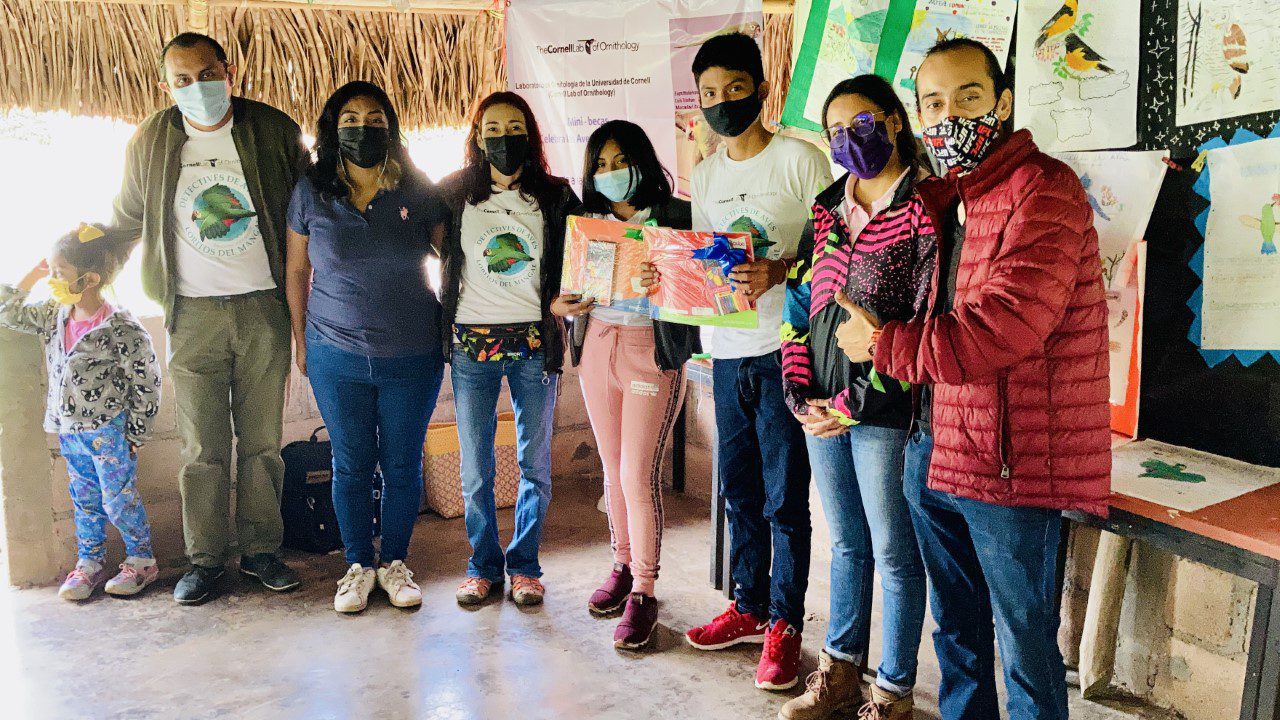
A lot was learned, and not just about birds!
The kids learned a lot about the biology of birds. They were surprised to learn that birds are close relatives to the dinosaurs.
Daniela (14 years old) said: “The birds when they’re born look more like dinosaurs, so the chickens in our homes are dinosaurs (laughter).” Correct, Daniela!
Also, the children participated in a game called “Put the parts on the bird” instead of “Pin the tail on the donkey.” In this game, they go over the names and locations of the body parts on birds. This is made more difficult because they were blindfolded! It wasn’t enough to just know the terms, they also had to get their bearings while blind-folded to find the right location for the part.
The students also learned about the habitats of the birds, their importance in ecosystems, and the problems they face. The participants chose their favorite bird and described in detail its habitat and its importance. After this activity, the children observed birds from their homes and wrote down their most distinctive characteristics. Get the dust off those binoculars, everyone!
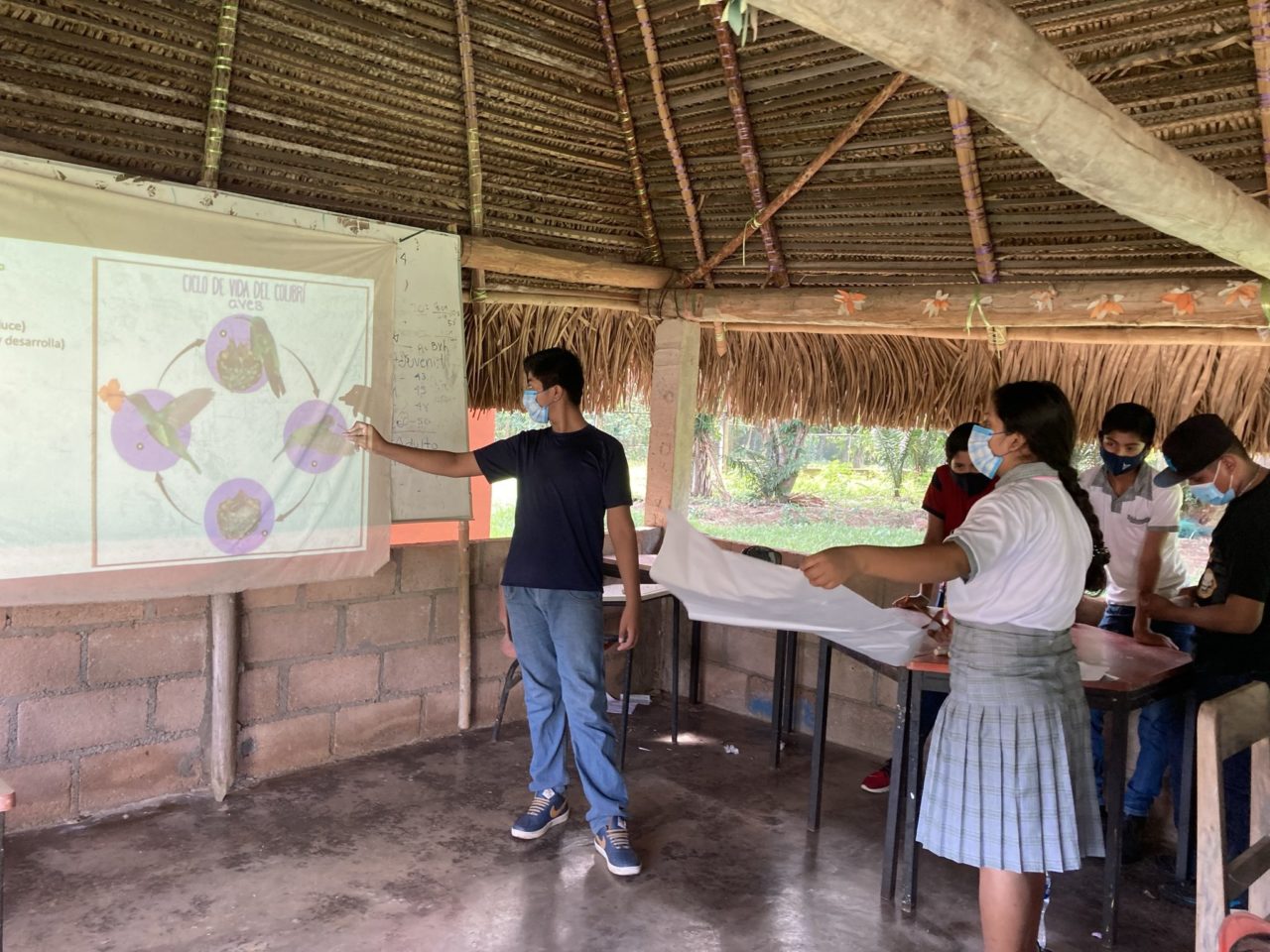
It’s time to explore!
Learning through experience is one of the most effective ways to remember and contextualize ideas, as well as to develop curiosity. The children and their guides went on an expedition. Each participant received binoculars and a bird guidebook. They were divided into groups and began to explore around the school
Luis discovered something interesting while walking and commented to Ivette Casas: “Biologist, there is a bird, it looks like a black grackle, but it’s not, it’s much wider and shorter of body.” What eyes Luis! It was the first time that some of the children and even the teacher had seen this bird. The children carefully approached the bird to observe it in greater detail. It turned out that it had a beautiful yellow underside. It was only one of the 21 species of birds seen that day! The children commented that they felt grateful for the practice, they felt good, they entertained themselves, and they were able to learn more about the birds that inhabit their community. After the hike, they entered their observations on eBird with the help of the group leaders. What an excellent way to participate in participatory science and to support scientific studies.
Anyone can contribute to science by sharing observations! After the excitement of sharing their observations on aVerAves (eBird Mexico), the children participated in a fun game in which they learned the songs of various local bird species. While they played, a Ferruginous Pygmy-Owl sang unexpectedly close to the school. It was a great experience! Just as they were learning about the songs of the birds the owl accompanied them with its song.
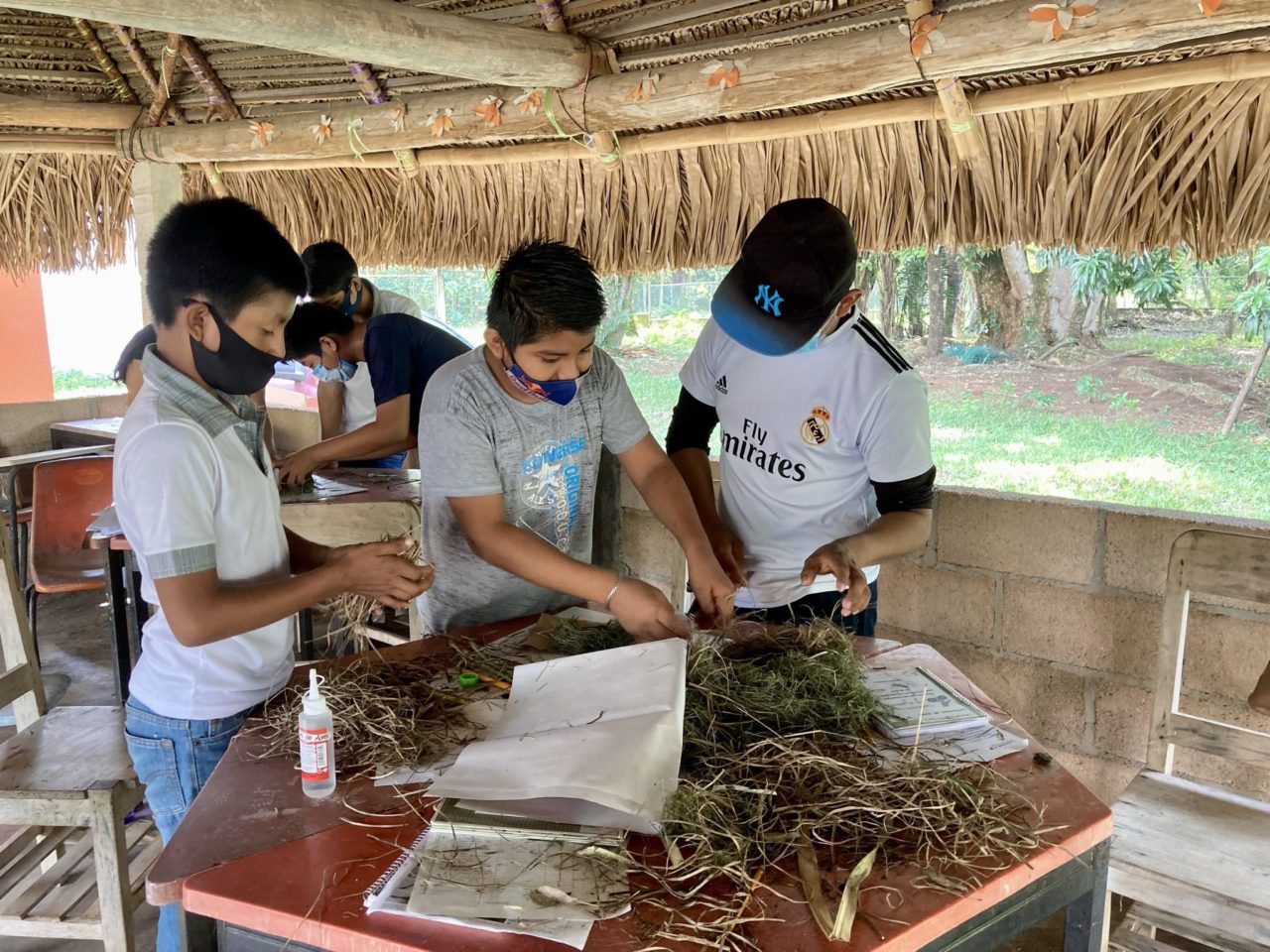
Finally, to reinforce the topic of the circle of life and the reproduction of the birds, the children built nests. Each team decorated the nest to their liking, using what had been learned and their knowledge regarding the nests in their community. A wonderful way to end the workshop!
The migration of birds and the risks they face in flight
They identified some migratory birds that fly above their state and what routes they follow during migration. The children were excited to learn that Veracruz in the most important location in the migratory route for predator species in Mexico. A total Mexican treasure! In the area of Chichicacxtle and Cardel, for example, it is possible to observe thousands of raptors fly south from the middle of September through November. The kids learned more about migratory birds through an artistic medium. The first day they decorated masks so that they looked like their favorite migratory bird. They then wrote poems about their favorite birds. These talented children shared their artwork with the rest of the group! Each student read their poem aloud even though some were a bit shy. Between the songs of the birds and the beautiful poetry of the children the sounds emerging form the middle school were inspiring!
Sadly, not all not all bird-related topics are inspiring. The illegal hunting of parrots (parakeets, parrots, and macaws) in the area was also integrated into the program. Mexico has 22 species of parrots, of which 8 species are found in the state of Veracruz. All eight species are under some category of risk, either in danger of extinction or under threat with special protections. This problem exists primarily because people want to have these species as pets. This was a delicate topic to discuss with the children as many of them have birds as pets. It is a difficult situation but not one without a solution! The children were asked what should be done to solve this problem. They drew posters with possible solutions to this complex problem. Some of them even took the posters and hung them close to their houses to create awareness in their community regarding the problem. As a result, they were given T-shirts displaying the title Bird Detectives, “Loritos Del Mangal.”
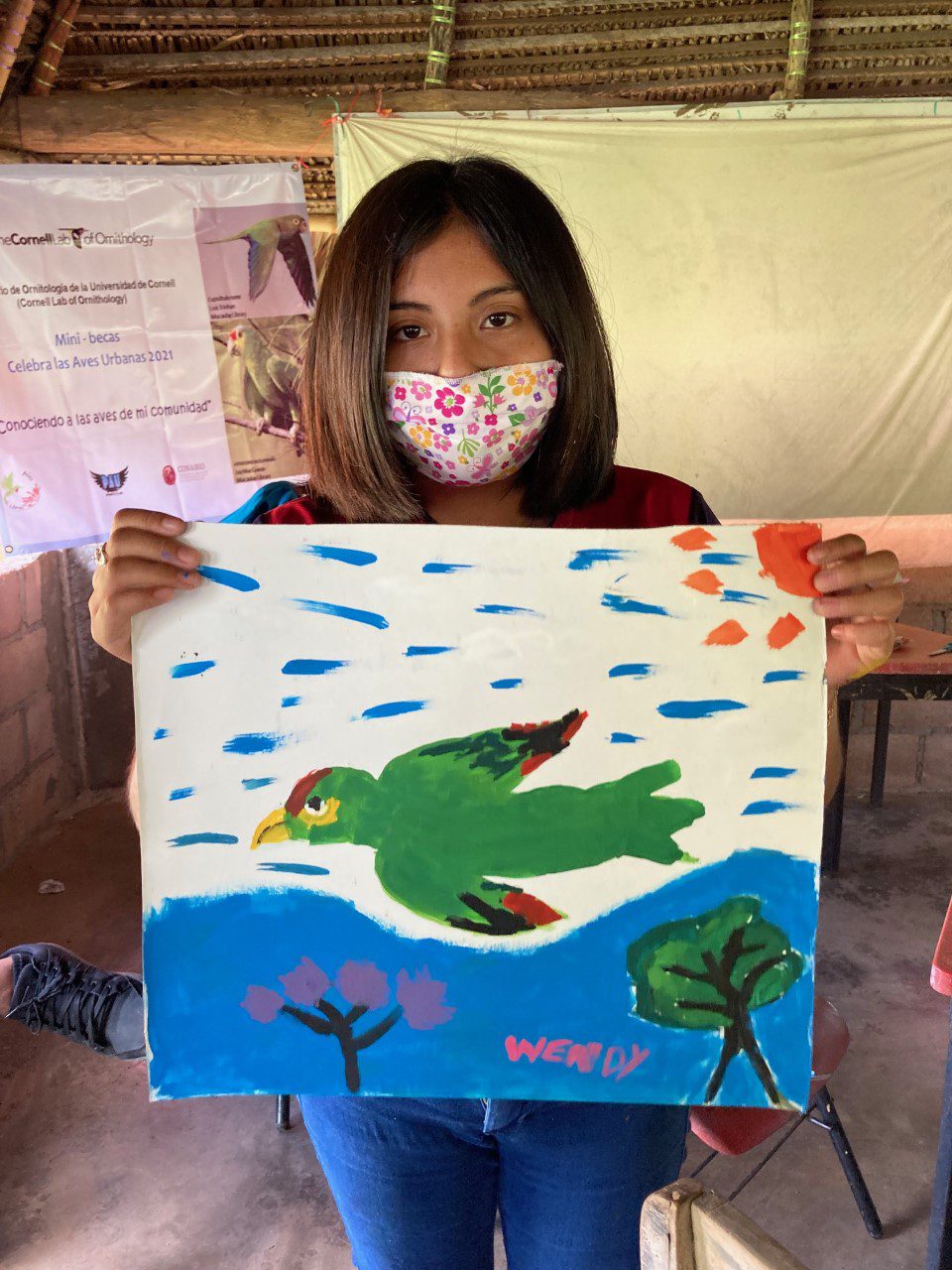
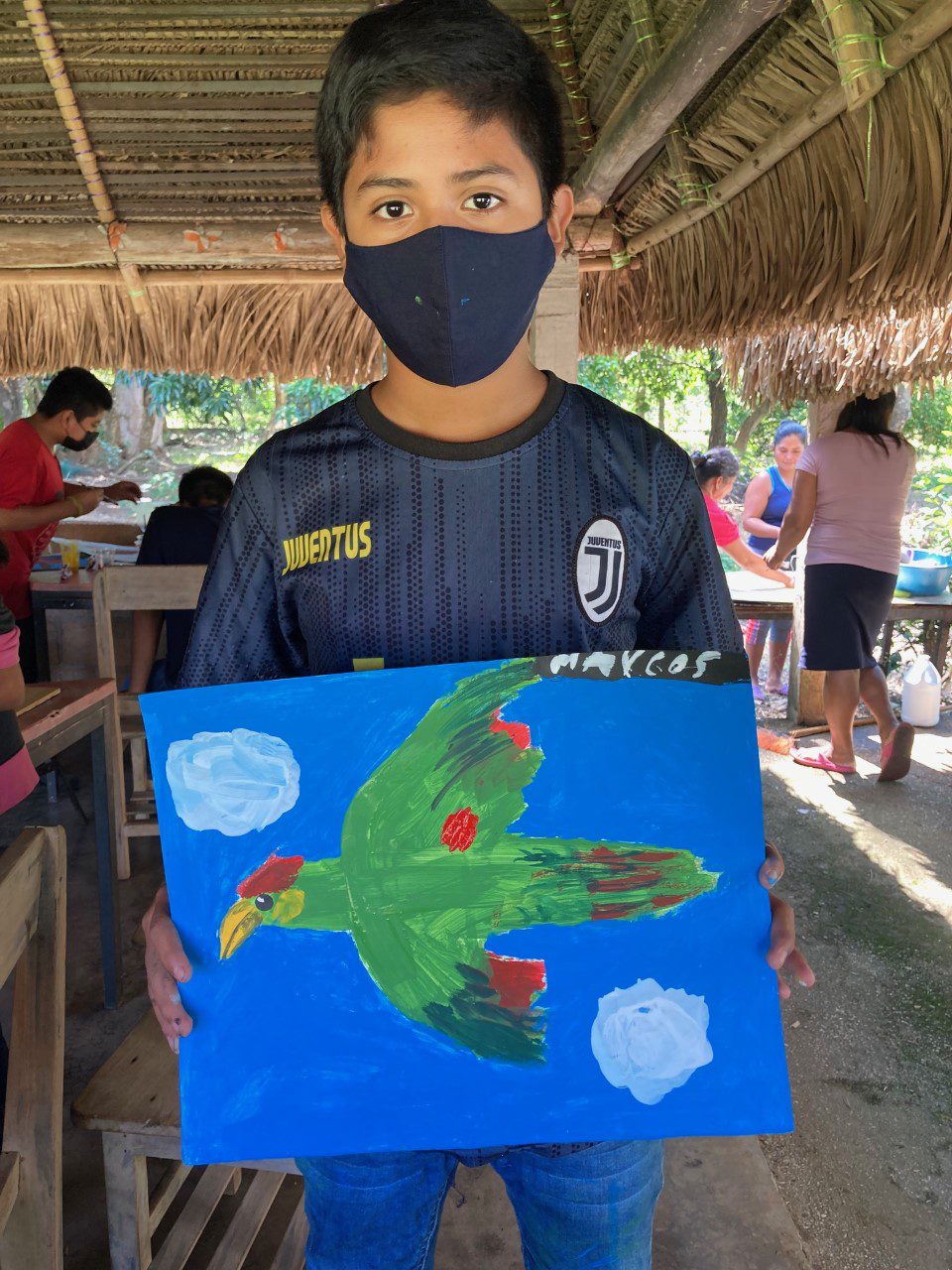
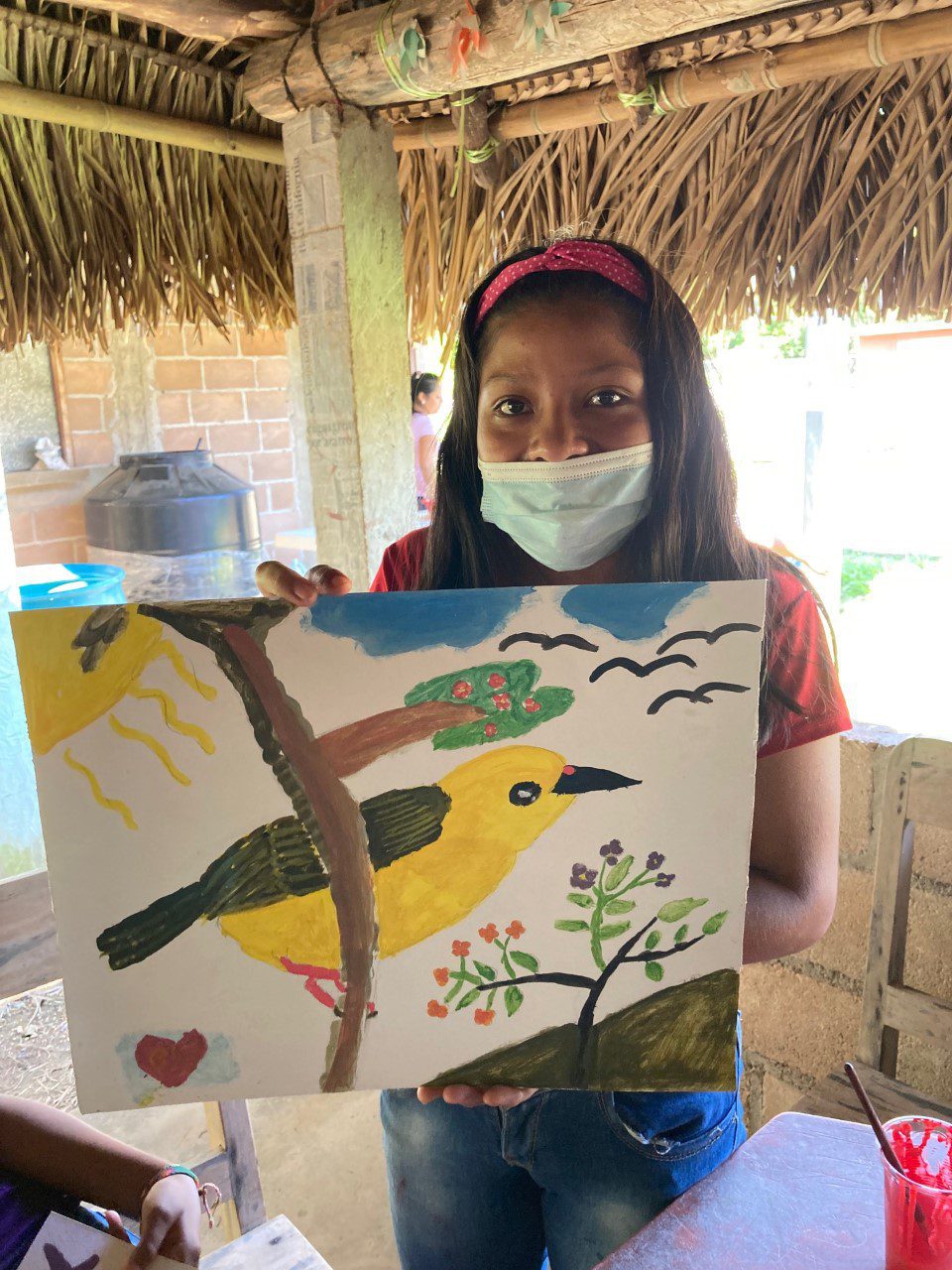
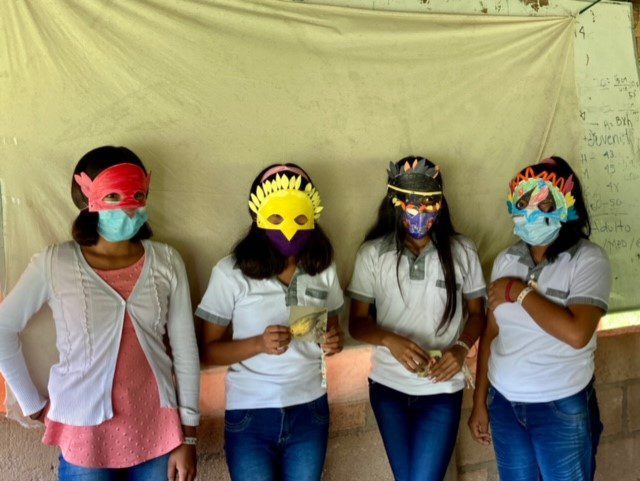
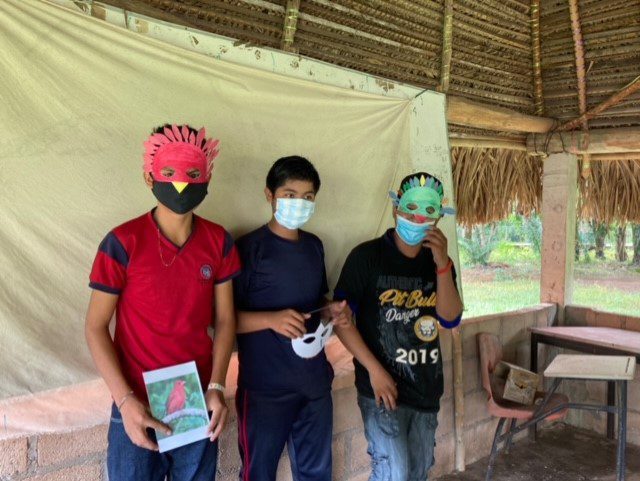
Gardens and Lagoons
Soon after, the children were once again in the field looking for spaces favorable to animals, especially for the birds and other pollinators. After discussing good habitat and how to create such habitat the children decided to create a garden. Many topics were considered, including the importance of planting native flora that can provide proper nutrition like nectar, pollen, seeds, fruits, and flowers that attract insects that serve as food for birds. After choosing the plants, the children worked the whole day. The garden is beautiful! After planting, the children distributed the chores so that the garden could stay clean, safe, and full of life for the birds in the community. We salute the children’s effort and the beautiful garden which they created at their school.
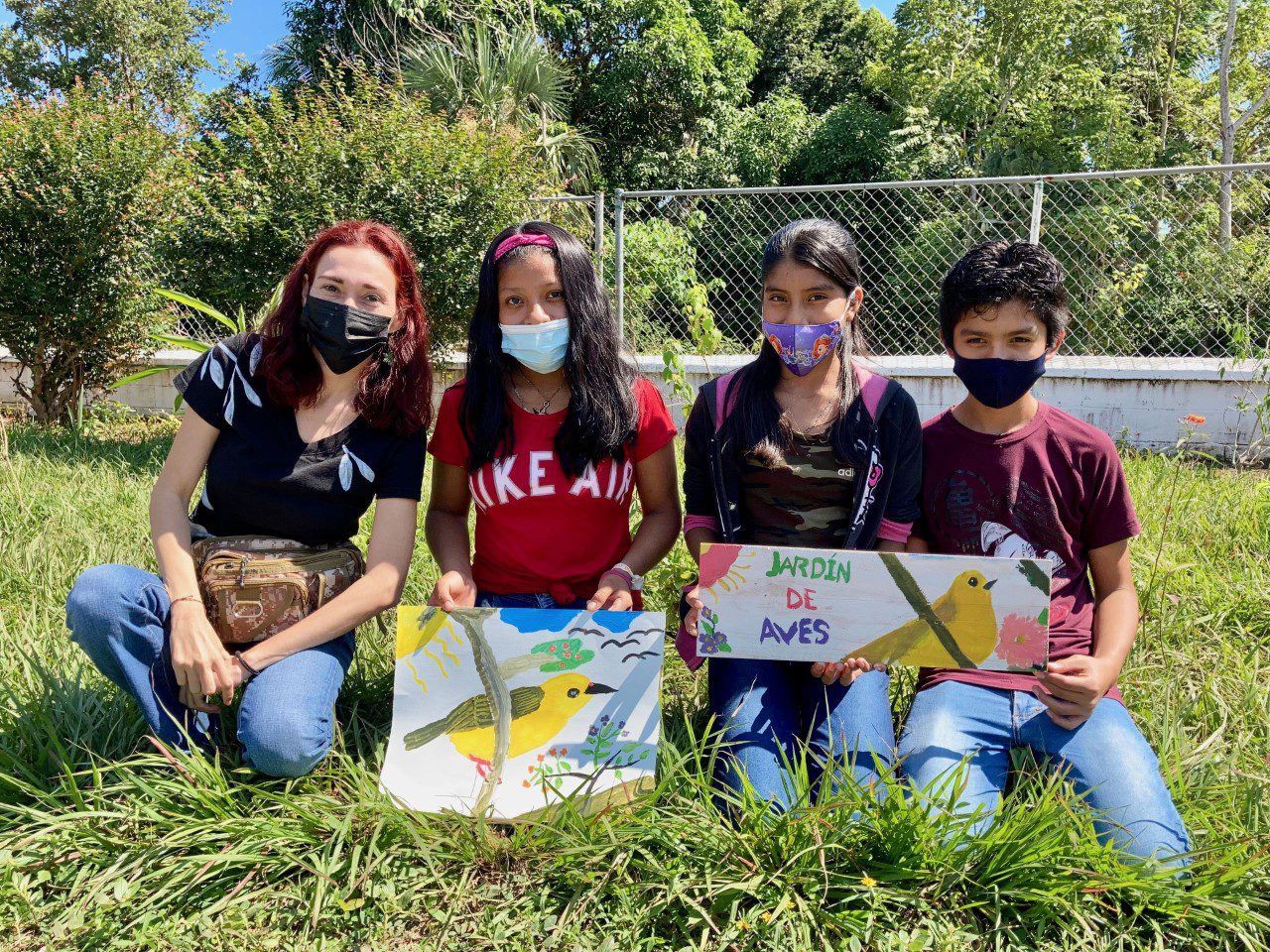
Next the students walked to Oyster Lagoon. This is near the school. The pandemic, which has been hard and long, had confined the children to their houses and now they could stretch their legs and enjoy contact with nature. Wonderful! A lot of beautiful birds were sighted. The children wrote down the birds they saw and made comments about them: “Look at its eyes, they are very round like marbles, look at the shape of its beak like a wide shoe, the color of its coat, listen to how they sing.” Blanca commented: “I still come with my dad to the mangrove swamp, I like it a lot and I can see more birds. I like to see the little crabs in the roots of the mangroves. Not long ago my dad saw in the swamp a Roseate Spoonbill. I like that one a lot because of the shape of its beak and the pink color of its feathers.”
After the walk the hungry children took a short break to eat and enjoy the natural beauty. The San Martín Pajapan Volcano was visible in the distance and the group appreciated the splendor of the view.
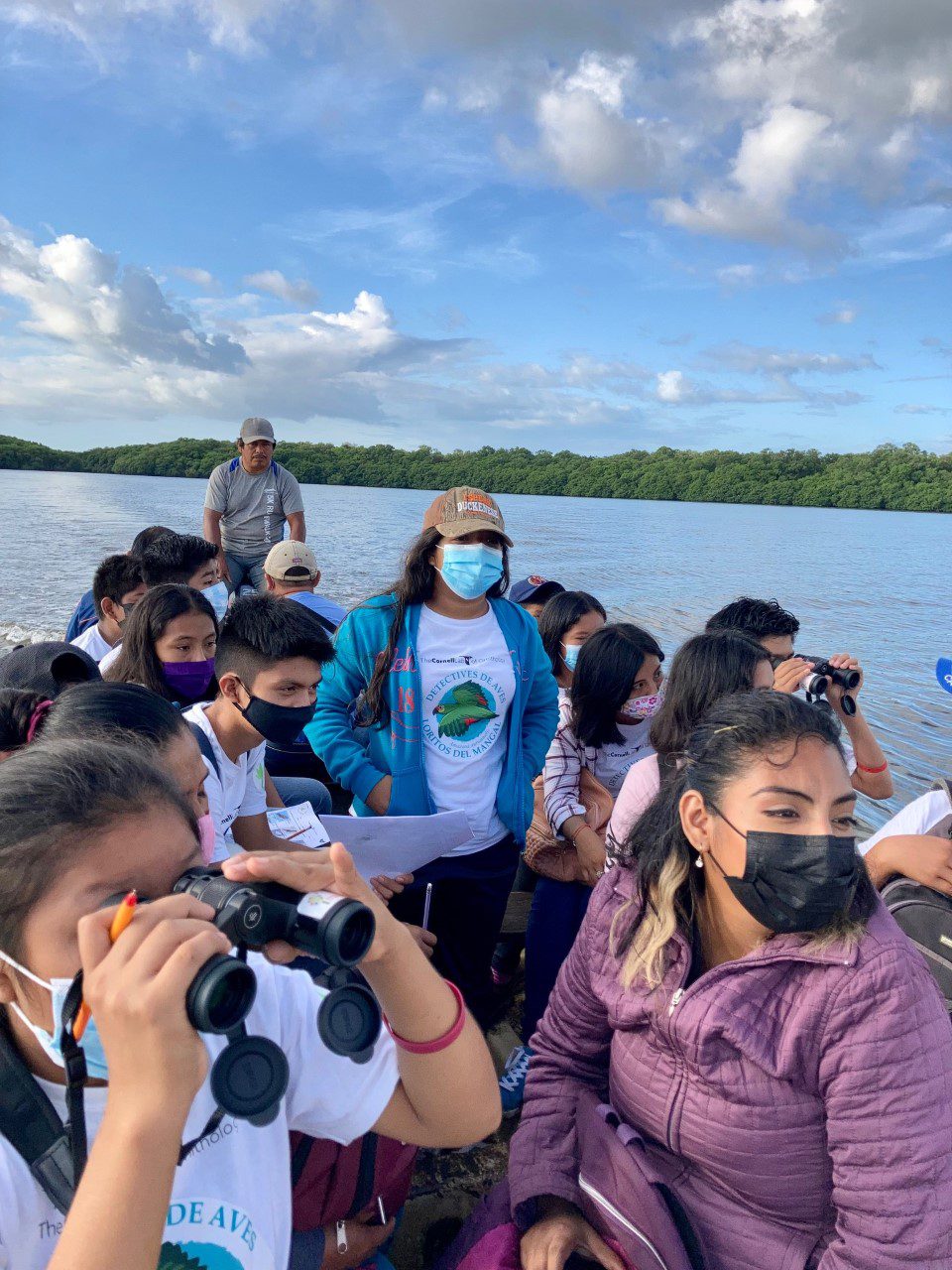
The Mural and Reflection
The Arbesú Lago Foundation generously donated a mural of birds to the Luís Donaldo Colosio school. The children voted for their favorite birds to be included in the mural, and everyone wanted to have a say!
Adalí said: “I vote for the Common Kingfisher, we see it here in the community and it feeds on fish in the streams.”
The children did much more than just chose birds that would be in the mural. They also helped the muralists paint the mural! Now every school day the students enjoy the beautiful mural.
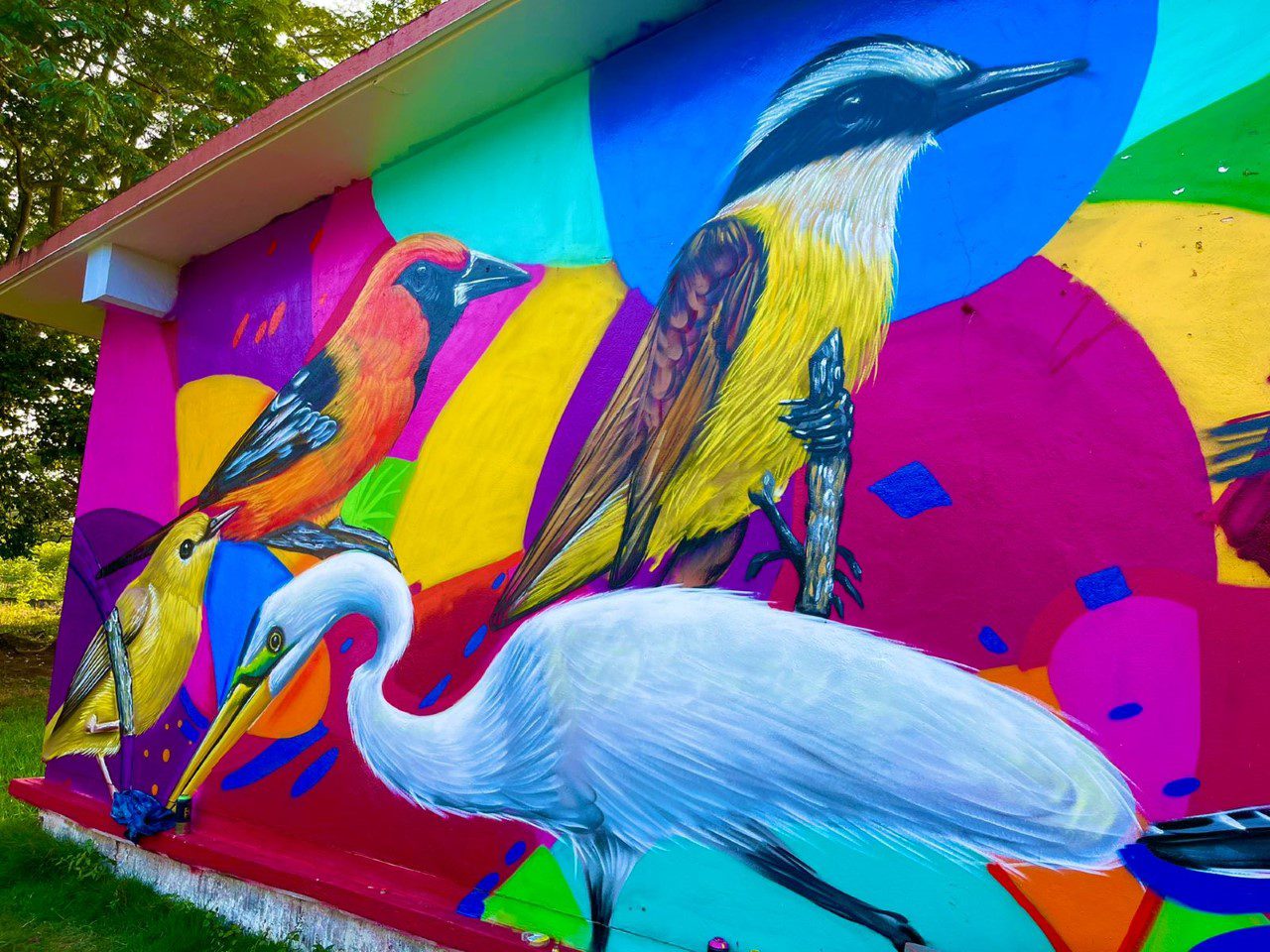
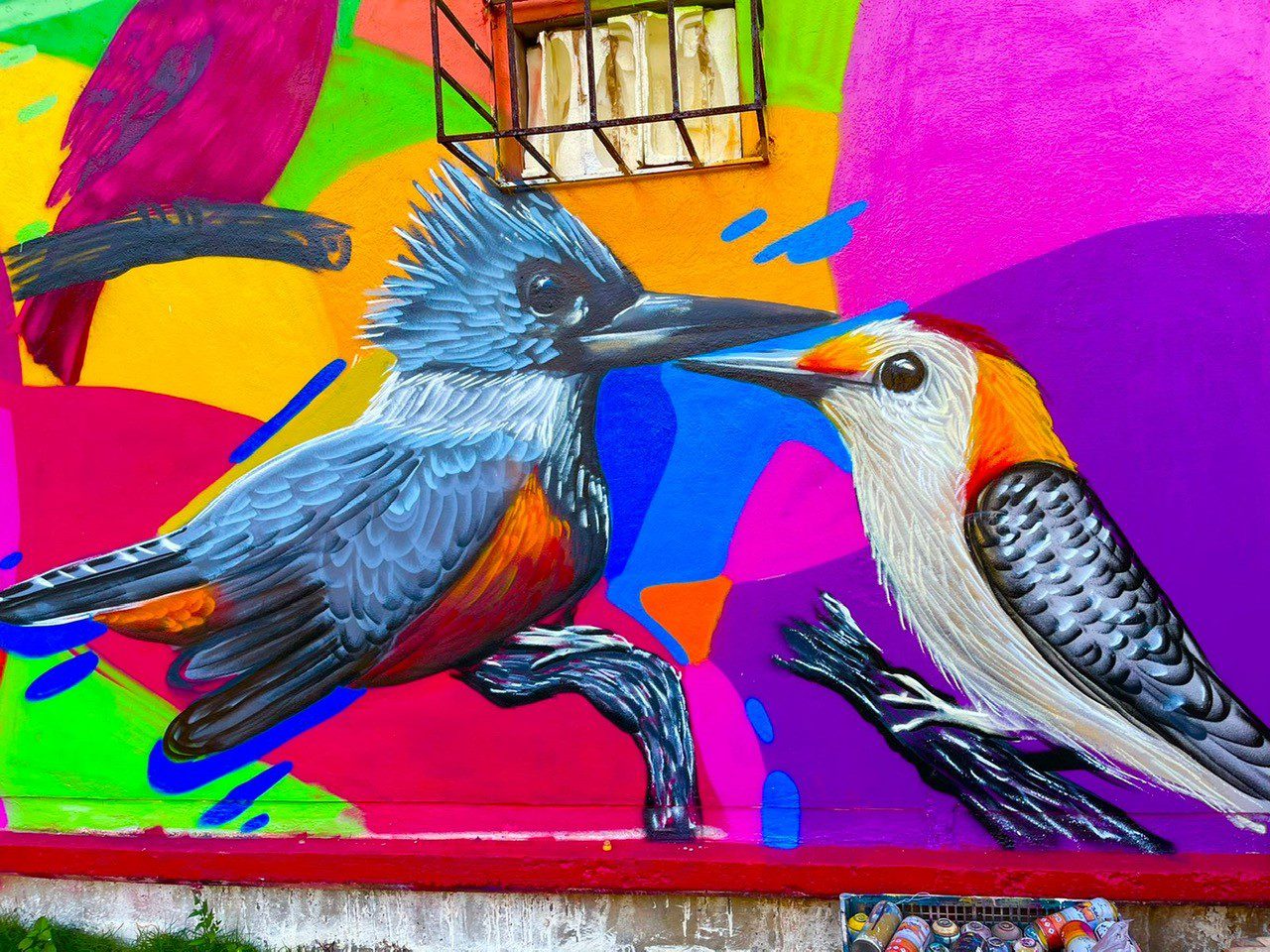
Once the mural was finished, the children saw a presentation about all the activities that they had completed which was very emotional and exciting. The atmosphere was one of joy and pride to see how far everyone had come.
Daniela said: “I feel very happy to have been able to learn and observe the birds that I have in my community.”
As a farewell activity there was a community bird drawing challenge. Knowing the artistic abilities of the children, it was very difficult to choose a winner! The children turned in creative and passionate paintings. It was truly difficult to choose between them. After a lot of thought and debate, Daniela won first place with her beautiful painting.
A special thanks to The Arbesú Lago Foundation for the beautiful mural and engaging the students in birds and nature through the arts, and to the Centro de Investigaciones Sociales y Estudios Jurídicos de la Peninsula A.C. for their essential support. Thanks to the Cornell Lab of Ornithology mini-grant, all the participants received certificates of participation. We applaud the tremendous effort of the children and all the organizers of the workshops to create an environment where the children could learn about the beauty of nature. A lot was learned about birds and nature, but most of all, the children brought their energy to the workshop every day. We wish them all the best in the future and hope that their passion for nature grows and extends its wings towards the horizon.
Page created by Diego Valle
